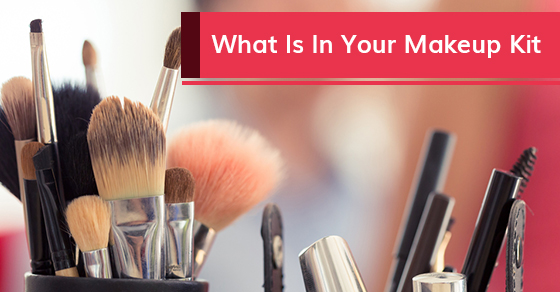Organization and preparedness are key in any job, and cosmetic training courses can give you the basics for creating sultry eyes, perfectly blushed cheeks, and luscious lips. But you need the right kits to realize the full extent of your client’s panache.
As you build your profile and become a professional makeup artist whom people can rely on, you must have certain tools and products with you at all times to quickly and efficiently address any cosmetic problems that arise on a set. You need to get the job done right the first time, as this will give your client the confidence to appear in public.
Here are some essential pieces of equipment that every professional and functional makeup kit needs:
- Cosmetic spatulas and steel palettesIt is important to maintain cleanliness when applying makeup on your clients. Use the spatula to scoop only the amount of product (cream, emollient, or liquid-based products) that you need and place it on a sterile palette. This will keep you from having to dip the brush back in the product container after applying the first round of makeup on your client’s face and spreading germs.
- Disposable mascara and lip wandsConsidering that bacteria in your mouth and eyes can be easily transferred by sharing some items, it is best to use disposable mascara and lip products whenever possible. Simply buy them in bulk and add them to your kit.
- Hair clipsThese are very important when applying makeup on clients with very long hair so you can easily pin it behind the face. They also help to avoid makeup smudges on the hair, which is particularly important since makeup is usually applied after styling the hair.
- False eyelashes and lash glueConsider keeping a wide range of false eyelash styles in your kit, as well as some lash glue, so you can attend to any request as soon as it arises. With the right training, you can control the placement and volume of eyelashes to create a natural look that emphasizes the eyes and gives your client a glamorous look.
- Q-tipsCotton buds are necessary to not only keep the ears clean but also tidy up rough edges and makeup smudges that fall on unwanted areas of the face.
- TweezersAlthough tweezers may not seem like a must-have tool for estheticians, skilled makeup artists should be able to adapt to any need that arises spontaneously, including shaping the eyebrows. Tweezers can also be used to place and position false eyelashes.
Final note
Starting out as a makeup artist after completing your cosmetic training course is both exciting and challenging. Your success will largely depend on the kits and tools that you have, in addition to your skill. Combining these tools with high-quality cosmetics and skincare products will help you create uplifting, glamorous, and life-changing makeovers and make your job and passion even more enjoyable.


